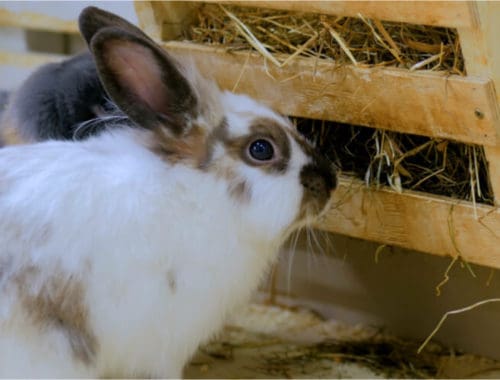Question: My diabetic cat is eating tissues and plastic at night, what should I do?
Adult diabetic cat on a controlled diet. Eating plastic and tissue at night. Can anything be given at night to make the cat feel full till morning?
-Gary
Answer:
Dear Gary,
You’re wise to be concerned about your cat eating non-food items, especially plastic. Plastic is not digestible and could cause a gastrointestinal obstruction.
Why is your cat eating tissues and plastic? It could have to do with diabetes or it could be a behavioral issue.
Blood Glucose Control
First, diabetic cats often develop a huge appetite. Because their cells are not sensitive to normal levels of insulin, they’re not able to fully absorb nutrients from the food they eat.
Weight loss occurs in diabetic cats when blood glucose levels are too high for a long time. Insulin injections help the nutrients from food get into the cells to provide energy. Once the cat’s energy needs are met with the help of insulin injections, the huge appetite will return to normal.
If your cat’s blood glucose levels are not well-controlled, he/she could be feeling very hungry. Some other symptoms of poor blood glucose control include excessive drinking and urination as well as weight loss. Check with your veterinarian to find out if the cat’s insulin dose needs to be changed.
Compulsive Behavior
Second, some cats have a compulsive need to eat certain non-food items like plastic. Although we don’t understand why this happens, some experts speculate it’s a desire to experience a certain texture in their mouth.
The texture of dry or canned cat food is not very similar to the birds and rodents cats eat in the wild. Plastic and tissues may simulate the feel of fur and feathers when chewed.
Boredom
Finally, indoor cats get bored easily. Since they don’t have to hunt for food, look for mates, care for kittens or run from predators, they have a lot of time on their hands (paws). Your cat could be eating plastic and tissues for entertainment and mental stimulation.
How to Stop Cats from Eating Plastic, Etc.
Check with your vet first before you offer new or extra food, but you could try using some food puzzles to give your cat mental stimulation. You might try growing some cat grass and letting the cat graze on that if your vet says it’s OK.
Some cats even enjoy some of the softer dog chew treats like dehydrated lamb’s ears. You’ll want to supervise your cat with any chews to make sure he/she doesn’t break off large pieces that could cause choking.
Make sure you’re spending some time in interactive play with your cat every day. Veterinary behaviorists say it’s not enough to give cats toys and expect them to play on their own. Try some of the simple toys available for cats like a feather attached by a string to a wand you hold. Play of this sort helps fulfill the mental and physical needs of a healthy cat.
In the short term, you must find a way to keep your cat safe from eating dangerous objects. You might try confining the kitty in a single room with no access to plastic or tissue. Stock the room with a nice bed, litter box, and some food puzzles (if your vet approves).
Sincerely,
TB Thompson DVM
Disclaimer: Your use of the Ask The Vet feature is subject to the Ask The Vet Terms of Use.
Disclaimer: Content is for informational and educational use only and should not replace professional veterinary advice.
Feature Image Credit: Serhii Ivashchuk, Shutterstock
































